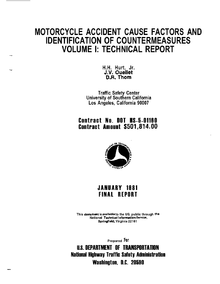Report: Difference between revisions
ClueBot NG (talk | contribs) m Reverting possible vandalism by 116.212.219.2 to version by Wolfdog. False positive? Report it. Thanks, ClueBot NG. (531653) (Bot) |
Tag: references removed |
||
| Line 15: | Line 15: | ||
Some examples of reports are: scientific reports, recommendation reports, [[white papers]], [[annual reports]], auditor's reports, workplace reports, [[census]] reports, trip reports, progress reports, investigative reports, budget reports, policy reports, demographic reports, [[credit reports]], appraisal reports, inspection reports, military reports, bound reports, etc. |
Some examples of reports are: scientific reports, recommendation reports, [[white papers]], [[annual reports]], auditor's reports, workplace reports, [[census]] reports, trip reports, progress reports, investigative reports, budget reports, policy reports, demographic reports, [[credit reports]], appraisal reports, inspection reports, military reports, bound reports, etc. |
||
shut up its not a report |
|||
== Enterprise/Client reporting == |
|||
With the dramatic expansion of information technology, and the desire for increased competitiveness in corporations, there has been an increase in the use of computing power to produce unified reports which join different views of the enterprise in one place.<ref>Moeller, Robert (2007). COSO Enterprise Risk Management: Understanding the New Integrated ERM Framework. Wiley. ISBN 0-471-74115-9.</ref> Termed '''Enterprise Reporting''', this process involves querying data sources with different [[logical data model|logical model]]s to produce a human readable report—for example, a computer user has to query the [[Human Resources]] databases and the Capital Improvements databases to show how efficiently space is being used across an entire corporation.''' |
|||
Enterprise Reporting is a fundamental part of the larger movement towards improved [[business intelligence]] and [[knowledge management]]. Often implementation involves [[Extract, transform, load|extract, transform, and load]] (ETL) procedures in coordination with a [[data warehouse]] and then using one or more [[List of reporting software|reporting tools]]. While reports can be distributed in print form or via [[email]], they are typically accessed via a corporate [[intranet]]. |
|||
==See also== |
==See also== |
||
Revision as of 02:18, 3 August 2011
This article may be in need of reorganization to comply with Wikipedia's layout guidelines. (June 2009) |

A report is a communicative work (usually of writing, speech, television, or film) made with the specific intention of relaying information or recounting certain events in a widely presentable form.
Written reports are documents which present focused, salient content to a specific audience. Reports are often used to display the result of an experiment, investigation, or inquiry. The audience may be public or private, an individual or the public in general. Reports are used in government, business, education, science, and other fields.
Reports often use persuasive elements, such as graphics, images, voice, or specialized vocabulary in order to persuade that specific audience to undertake an action. One of the most common formats for presenting reports is IMRAD: Introduction, Methods, Results and Discussion. This structure is standard for the genre because it mirrors the traditional publication of scientific research and summons the ethos and credibility of that discipline. Reports are not required to follow this pattern, and may use alternative patterns like the problem-solution format.
Additional elements often used to persuade readers include: headings to indicate topics, to more complex formats including charts, tables, figures, pictures, tables of contents, abstracts, summaries, appendices, footnotes, hyperlinks, and references.
Some examples of reports are: scientific reports, recommendation reports, white papers, annual reports, auditor's reports, workplace reports, census reports, trip reports, progress reports, investigative reports, budget reports, policy reports, demographic reports, credit reports, appraisal reports, inspection reports, military reports, bound reports, etc.
shut up its not a report
See also
- Customer Relationship Management
- Data quality
- Enterprise Application Integration
- Enterprise Resource Planning
- Decision Support System
- Global Reporting Initiative
- Management Information Systems
- Grey Literature International Steering Committee International guidelines for the production of scientific and technical reports
References
Reports or an explanation about them:
- Link, Morton and Hill, Winfrey (1970). Hill-Link Minority Report of the Presidential Commission on Obscenity and Pornography. Random House.
- United States Immigration Commission (1911). Abstracts Of Reports Of The Immigration Commission, With Conclusions And Recommendations And Views Of The Minority. Kessinger Publishing. ISBN 1-4366-1613-1.
The process of writing reports:
- Blicq, Ronald (2003). "Technically-Write!". Prentice Hall. ISBN 0-13-114878-8.
- Gerson, Sharon and Gerson, Steven (2005). Technical Writing: Process and Product. Prentice Hall. ISBN 0-13-119664-2.
- Lannon, John (2007). Technical Communication. Longman. ISBN 0-205-55957-3.
External links
- A Guide to Enterprise Reporting
- GLISC - Guidelines for the production of scientific and technical reports
- DynamicReports, an open source Java API reporting library
- Reporting Software Tools Independent Review and analysis of reporting tools
